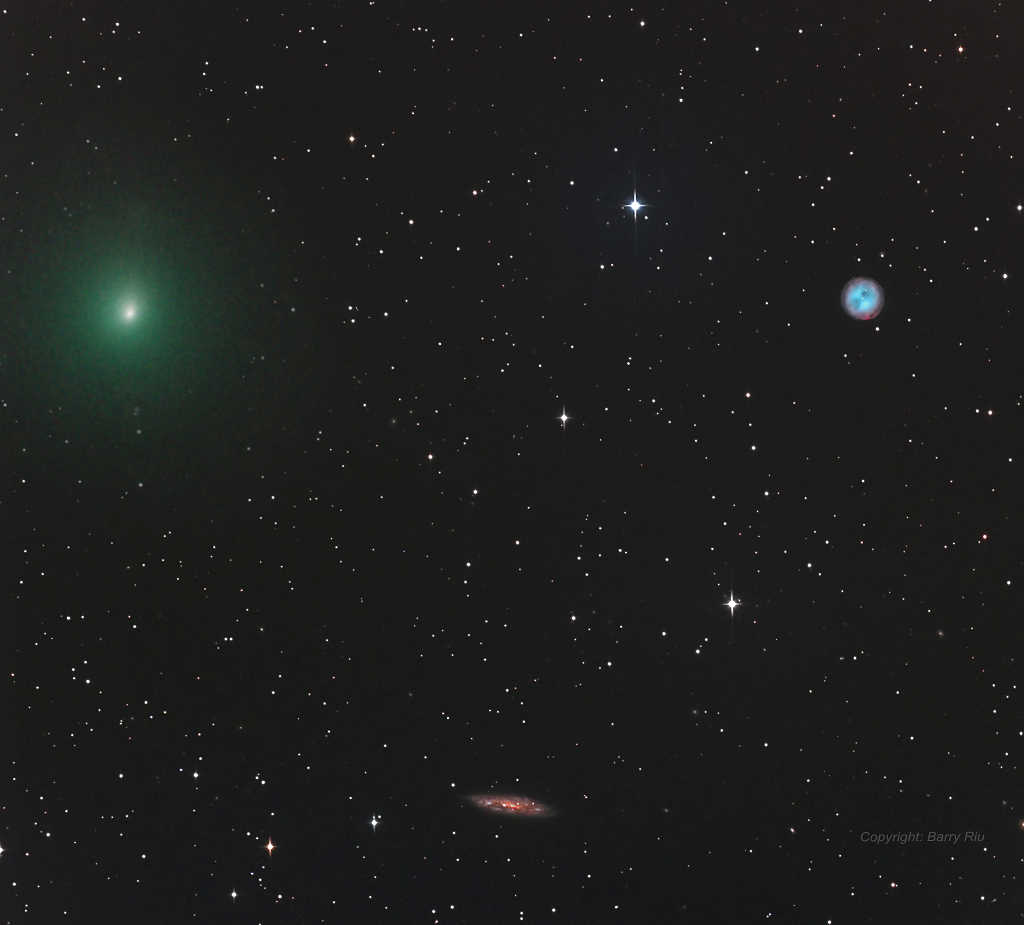There are advances being made almost daily in the disciplines required to make space and its contents accessible. This blog brings together a lot of that info, as it is reported, tracking the small steps into space that will make it just another place we carry out normal human economic, leisure and living activities.
Friday, 24 March 2017
Trilobites: Visualizing the Cosmic Streams That Spew Meteor Showers
Researchers recorded more than 300,000 meteoroid trajectories since 2010 to depict the drifting paths of meteor showers that Earth passes through.
via New York Times
Astronomers identify purest, most massive brown dwarf
Astronomers have identified a record breaking brown dwarf (a star too small for nuclear fusion) with the 'purest' composition and the highest mass yet known. The object, known as SDSS J0104+1535, is a member of the so-called halo -- the outermost reaches -- of our galaxy, made up of the most ancient stars.
via Science Daily
Zazzle Space Exploration market place
Art-science residency
Aoife van Linden Tol, recipient of the first ESA–Ars Electronica residency, spent three weeks at ESA researching for her Star Storm project
via ESA Space Science
http://blogs.esa.int/artscience/2017/03/24/stellar-start-for-aoife-van-linden-tol-s-residency/
The Comet, the Owl, and the Galaxy
 Comet 41P/Tuttle-Giacobini-Kresak poses for a Messier moment in this telescopic snapshot from March 21. In fact it shares the 1 degree wide field-of-view with two well-known entries in the 18th century comet-hunting astronomer's famous catalog. Sweeping through northern springtime skies just below the Big Dipper, the faint greenish comet was about 75 light-seconds from our fair planet. Dusty, edge-on spiral galaxy Messier 108 (bottom center) is more like 45 million light-years away. At upper right, the planetary nebula with an aging but intensely hot central star, the owlish Messier 97 is only about 12 thousand light-years distant though, still well within our own Milky Way galaxy. Named for its discoverer and re-discoverers, this faint periodic comet was first sighted in 1858 and not again until 1907 and 1951. Matching orbit calculations indicated that the same comet had been observed at widely separated times. Nearing its best apparition and closest approach to Earth in over 100 years on April 1, comet 41P orbits the Sun with a period of about 5.4 years.
Comet 41P/Tuttle-Giacobini-Kresak poses for a Messier moment in this telescopic snapshot from March 21. In fact it shares the 1 degree wide field-of-view with two well-known entries in the 18th century comet-hunting astronomer's famous catalog. Sweeping through northern springtime skies just below the Big Dipper, the faint greenish comet was about 75 light-seconds from our fair planet. Dusty, edge-on spiral galaxy Messier 108 (bottom center) is more like 45 million light-years away. At upper right, the planetary nebula with an aging but intensely hot central star, the owlish Messier 97 is only about 12 thousand light-years distant though, still well within our own Milky Way galaxy. Named for its discoverer and re-discoverers, this faint periodic comet was first sighted in 1858 and not again until 1907 and 1951. Matching orbit calculations indicated that the same comet had been observed at widely separated times. Nearing its best apparition and closest approach to Earth in over 100 years on April 1, comet 41P orbits the Sun with a period of about 5.4 years.Zazzle Space Gifts for young and old
Gravitational Wave Kicks Monster Black Hole Out Of Galactic Core
Runaway black hole is the most massive ever detected far from its central home
Normally, hefty black holes anchor the centers of galaxies. So researchers were surprised to discover a supermassive black hole speeding through the galactic suburbs. Black holes cannot be observed directly, but they are the energy source at the heart of quasars — intense, compact gushers of radiation that can outshine an entire galaxy. NASA's Hubble Space Telescope made the discovery by finding a bright quasar located far from the center of the host galaxy.
Researchers estimate that it took the equivalent energy of 100 million supernovas exploding simultaneously to jettison the black hole. What could pry this giant monster from its central home? The most plausible explanation for this propulsive energy is that the monster object was given a kick by gravitational waves unleashed by the merger of two black holes as a result of a collision between two galaxies. First predicted by Albert Einstein, gravitational waves are ripples in the fabric of space that are created when two massive objects collide.
via Hubble - News feed
http://hubblesite.org/news_release/news/2017-12
A Space Odyssey: Making Art Up There
The artist Eduardo Kac and Thomas Pesquet, a Frenchman on the International Space Station, have created art in space.
via New York Times